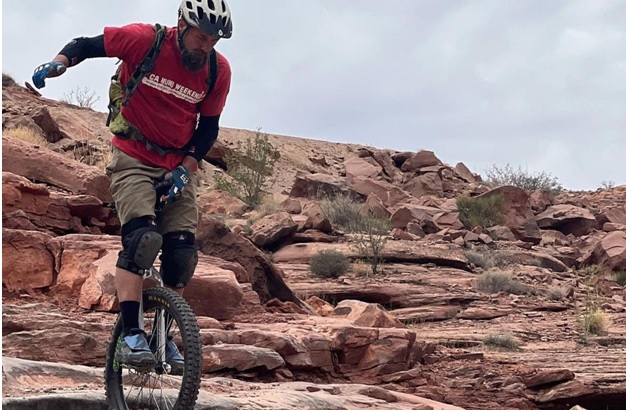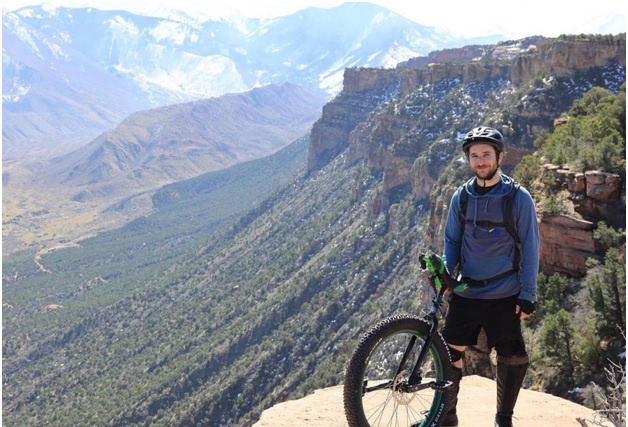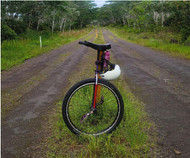Is Your Unicycle Seatpost Too High or Low? (and What You Can Do)
07/04/22
Getting into the sport of unicycling can be highly rewarding but that doesn’t mean it’s free of challenges. Just like anything worth pursuing, you have to earn the payoff through a combination of hard work, dedication, and trial.
Some of the things you’ll have to master are mounting and dismounting, balancing, starting and stopping, and maneuvering. You’ll also have to choose a discipline. Are you looking for a Muni unicycle for mountain riding? A unicycle for freestyle or trick riding? Or maybe you’re looking for a commuter unicycle?
The thing is, not all unicycles are equally suited to all different disciplines of riding, and unicycle size, more than any other feature, dictates suitability.
Moreover, since there is only one wheel and (typically) no chain drive, riders must sit above the wheel and reach the pedals which directly engage the hub axle through the crank arms.
There’s no way to stagger the arrangement in the absence of a chain drive. Consequently, rider height (inseam length, really) and the size of a unicycle must agree.
That being said (there are some unicycles that are just too big or too small for certain riders, regardless) there are some things you can do if the unicycle feels like it's too high or too low.
Namely, you can adjust the seatpost height or cut down the seatpost, completely changing its adjustability parameters.
First, though, you need to know if your seatpost adjustment is to blame.
Is Your Seatpost Too Low?
You never want your legs to be completely extended or totally bunched up when you’re riding a unicycle. That much is in common with riding bikes. Either scenario can cost you control and handling.
So how can you tell if your seatpost is too low? There are a few things you can look out for.
One is that you’ll feel like you’re not able to extend your leg far enough to get good “pedal power” at the bottom of your leg’s natural revolution. On the flip side, when your leg rises with the pedal, it can feel like your knee is bending too far. If it is uncomfortable or your knees are clicking, you’re going too far and the saddle needs to be raised.
Aside from discomfort, if it feels like you can’t put enough power into each stroke, the case may be that your seat is too low.
So what about if it’s too high?

Is It Too High?
A seatpost that’s too low can easily be raised (see below) but if your seatpost is too high you might have other issues.
If your seatpost is too high, the first thing you may notice is that you feel “off-balance” in the saddle, and too far above the pedals. Also, if your leg is nearly straight with your foot contacting the pedal and the pedal at its lowest point, the seat is far too high. This, like a short seat post, can compromise on power.
Discomfort is another symptom - but not necessarily in the knee. Actually, one of the signs of a seatpost that’s too high is pain in the back of the leg - a sign of straining your hamstrings through overextension.
Seatpost height that is too high can also cause you to want to “rock” in the saddle as you pedal back and forth, which can cause discomfort and throw you off balance, too.
So, the solution? Adjust the saddle height!
Adjust It!
Assuming you’re actually riding a unicycle that it makes sense for you to ride, and is properly sized for you, all you need to do is adjust your seatpost height.
To adjust the height of the saddle, you’ll need first to loosen the seatpost clamp. Most unicycles come with 27.2mm, 28.6mm, or 31.8mm seatpost clamps, and most clamps tighten and loosen via the aid of either quick release clamps or bolts.
To raise or lower the seat height for better comfort and handling, first, you need to loosen the seatpost clamp that secures your seatpost.
Bolted models require a wrench to loosen. First, loosen one or both bolts, then slide the seat tube up or down before retightening.
The procedure is basically the same for seatpost clamps with quick-release clamps. Only, these quick-release seatpost clamps are easier to use. Simply open them to loosen their clamping force, then adjust seat height before closing the quick-release clamps.

Cut Down the Seatpost
If you can’t lower your seat post far enough because the seatpost is rubbing up against the top of the tire, then you’re going to need to cut down your seatpost.
There are two ways to do this. You can either use a pipe cutter or a hacksaw to do so. We’ve actually blogged about this before, so for details, consult “Adjusting Unicycle Saddle Height: What You Need to Know,” or look through our FAQs for instructions.
Take Your Inseam Measurements
Finally, if no matter what you do it seems like you’re either cramped or stretched by your unicycle, it may be that you are either too tall (or too short) to make adjustments that will work for you.
You’re going to need to check your inseam length in order to determine whether or not the unicycle is a good size for you. We also covered that in the blog mentioned in the last section (as well as in our FAQs section) so again, check those resources for more information on unicycle sizing and how to take your inseam measurements.
Need More Information? We Carry Everything from Seat Posts to Saddles and 31.8 Seatpost Clamps!
Need more help or have specific questions about unicycle sizing, cutting down your seatpost, or replacing your seatpost clamp for a different model? We’re here to help at 678-494-4962.
We also carry a wide range of unicycle seatpost clamps, including 27.2, 28.6, and 31.8 seatpost clamps as well as replacement seat posts, saddles, and more. Take a look through the previous link or give us a call if you need assistance.

